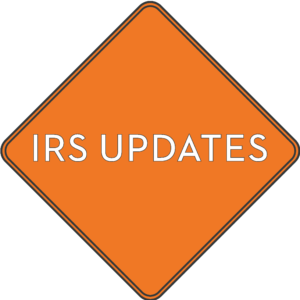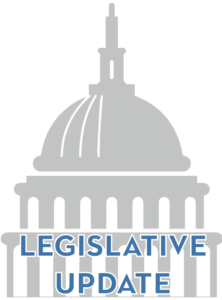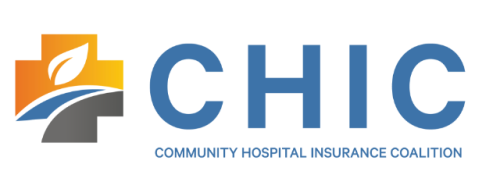IRS Newsletter Highlights Several Developments Affecting Retirement Plans
Employee Benefit Changes in the Tax Cuts and Jobs Act of 2017
DOL Announces Annual Adjustments to ERISA Penalties
EBSA Proposes Regulations for Association Health Plans
IRS Extends 2018 Due Dates for Sections 6055 and 6056 Individual Statements and Extends Good Faith Relief

On Dec. 22, 2017, the IRS released Notice 2018-06, which delays the date by which informational statements must be provided to individuals and provides transitional good faith relief for reasonable mistakes made in reporting Sections 6055 and 6056 information about 2017.
Specifically, the due date for providing individuals with Form 1095-B (by a carrier or self-insured employer) and Form 1095-C (by an applicable large employer) has been extended by 30 days, to March 2, 2018 (changed from Jan. 31, 2018). The deadline for filing these forms with the IRS hasn’t changed. That date remains April 2, 2018, if filing electronically, or Feb. 28, 2018, if not filing electronically. If an employer doesn’t comply with the deadlines, the employer could be subject to penalties.
Despite the extended due date, employers and other coverage providers are encouraged to furnish 2017 statements as soon as they’re able. But if individuals haven’t received these forms by the time they file their individual tax returns, they may rely upon other information received from employers or coverage providers to attest that they had minimum essential coverage as required by the individual mandate. Individuals need not amend their returns once they receive the forms, but they should keep them with their tax records.
In addition, Notice 2018-06 extends good faith effort relief to employers for incorrect or incomplete returns filed in 2018 (as to 2017 information). The IRS previously provided relief for penalties stemming from 2017 reporting failures (as to 2016 data), and the relief appears to be outlined in the 2017 Instructions for Forms 1094-C and 1095-C. Accordingly, for 2017 and prior filings, relief is available to entities that could show that they made good faith efforts to comply with the information reporting requirements, even if they reported incorrect or incomplete information. In determining what constitutes a good faith effort, the IRS will take into account whether an employer or other coverage provider made reasonable efforts to prepare for reporting, such as gathering and transmitting the necessary data to a reporting service provider or testing its ability to use the AIR electronic submission process. This relief doesn’t apply to a failure to timely furnish or file a statement or return, and doesn’t extend to employer mandate penalties (for large employers that didn’t offer affordable coverage to full-time employees pursuant to the ACA’s employer mandate).
IRS Newsletter Highlights Several Developments Affecting Retirement Plans
In the December 2017 issue of Employee Plans News, the IRS addressed several topics related to 401(k) plans.
First, the IRS now has a webpage that summarizes recent national disaster legislation, making it easier for plan participants to access retirement plan funds to recover from Hurricanes Harvey, Irma and Maria. The webpage describes relief available for early distributions, plan loan and repayment options, and retroactive plan term amendments.
Second, IRS Form 5300 underwent major revisions that became effective back on Jan. 1, 2017. Form 5300 is used to request a determination letter for an individually designed plan, which includes a 401(k) plan. The IRS warns that any applications submitted after Dec. 31, 2017 will be returned if the previous version of the form is used. Further, plan sponsors are reminded that requests for partial termination determinations may be submitted without regard to their ability to request a determination letter on plan documents.
Third, the IRS has updated the listing of required modifications (LRMs) for cash or deferred arrangements (CODAs) and defined contribution plans. The LRM is a collection of information that helps plan sponsors draft plans that comply with applicable laws and regulations. The updated defined contribution LRM makes adjustments in plan qualification requirements, regulations and guidance provided in the 2017 Cumulative List of Changes.
Lastly, other items in the newsletter include the release of advanced copies of Form 5500 for 2017, instructions for field agents regarding missing participants and beneficiaries, and updated instructions for electronically filing Form 8955-SSA (Publication 4810).
Plan sponsors of retirement plans should familiarize themselves with the information contained in the IRS newsletter (especially the various types of disaster-related relief affecting employee benefit plans) and make any necessary changes.
Employee Benefit Changes in the Tax Cuts and Jobs Act of 2017
by Marathas Barrow Weatherhead Lent LLP, a national law firm with recognized experts on the Affordable Care Act.

On December 22, 2017, President Trump signed what is popularly known as the Tax Cuts and Jobs Act (H.R. 1) (the “Bill”), overhauling America’s tax code for both individuals and corporations and providing the most sweeping changes to the U.S. Tax Code since 1986. The House and Senate Conference Committee provided a Policy Highlights of the major provisions of the Bill, and the Joint Committee on Taxation provided a lengthy explanation of the Bill.
Compared to initial proposals, the final Bill generally does not make significant changes to employee benefits. The chart that follows highlights certain broad-based health and welfare, fringe and retirement plan benefit provisions of the Bill (comparing them to current law). Notable changes include:
- Repeal of the Individual Mandate penalty beginning in 2019;
- Elimination/changes of employer deductions for certain fringe benefits, including qualified transportation fringes, moving expenses, and meals/entertainment;
- New tax credit for employers that pay qualifying employee while on family and medical leave, as described by the Family Medical Leave Act;
- Extended rollover periods for deemed distributions of retirement plan loans; and
- Tax relief for retirement plan distributions to relieve 2016 major disasters.
In addition, the Bill makes certain narrowly-tailored changes (which we did not include in the chart that follows) impacting only certain types of employers or compensation. For instance, the Bill:
- modifies the $1 million compensation deduction limitation under Code Section 162(m) for publicly traded companies (expanding the type of compensation which will be applied against the limitation, the individuals who will be considered covered employees, and the type of employers that will be subject to the limitation), with transition relief for certain performance-based compensation arrangements pursuant to “written binding contracts” in effect as of November 2, 2017, so long as such arrangements are not “modified in any material respect”; and
- creates a new “qualified equity grant” by adding a new Code Section 83(i), which allows employees of non-publicly traded companies to elect to defer taxation of stock options and restricted stock units (“RSUs”) for up to five years after the exercise of such stock options or the vesting of RSUs.
The Bill also has specific provisions impacting employers that are tax-exempt organizations. For instance, it imposes a new excise tax for highly compensated non-profit employees, and changes the way non-profits calculate unrelated business income tax (UBIT).
What’s Not Changing
ACA Employer Mandate & Reporting
While the individual mandate penalty has been reduced to zero beginning in 2019, at this time, the employer mandate and employer reporting requirements under the Affordable Care Act (ACA) remain in effect.
In addition, there were no changes to other ACA taxes and requirements. For example, the bill does not eliminate (or delay) the 40% excise tax on high-cost plans (Cadillac Tax) that is scheduled to be effective beginning in 2020, nor does it eliminate the comparative effectiveness research fees paid annually to fund the Patient-Centered Outcomes Research Institute (PCORI) through 2019. However, the Trump Administration has indicated its intention to renew ACA repeal and replace efforts in 2018, which may result in additional changes at a later date.
It has been recently reported that Republican legislators are targeting a further delay of two ACA-created taxes – a 2.3% excise tax on medical devices, and an annual fee imposed on health insurers known as the HIT tax – for inclusion in a spending bill that must be passed by January 19. Both of these taxes are scheduled to go into effect beginning in 2018 after a delay was incorporated in a 2015 year-end tax extenders deal. Employer groups have been lobbying for an elimination or delay of the Cadillac Tax and relief on the employer mandate. It remains to be seen whether these tax relief items will be included as part of a spending bill later this month.
FSAs, HSAs, Adoption Assistance and Education Assistance Programs
Earlier versions of the Bill in both the House and Senate included provisions that would have significantly impacted the tax treatment of many employee benefits. However, the final Bill makes no changes to the tax treatment of HSAs, dependent care FSAs, health FSAs, adoption assistance programs, or qualified education assistance programs. Although, it has been reported that repealing restrictions on using FSAs, HSAs and other account-based plans to purchase over-the-counter medications could also be considered during negotiation of the spending bill.
Employee Tax Exclusion for Qualified Transportation Fringe Benefits
Employees may continue to receive transit expenses (other than bicycle commuting expenses) on a tax-free basis under qualified transportation fringe programs; however, the Bill eliminated the corresponding employer deduction. Therefore, it appears that employers lose the deduction for any qualified transportation fringe benefits provided to employees, including those funded through pre-tax employee contributions. However, it is not entirely clear whether the law was intended to have this effect or whether the deduction is lost only when an employer pays the expenses directly (i.e., without pre-tax employee contributions).
Given this ambiguity, employers may wish to wait for a technical correction to the Bill or IRS guidance before making any changes (such as converting transportation programs to after-tax arrangements which would generally be more tax efficient for employers) or eliminating such programs, whether through a cafeteria plan or otherwise (which could also raise issues under local ordinances in such cities such as Washington, DC, New York, and San Francisco that require employers to maintain such programs).
Note that tax-exempt employers are also impacted by this change. They will be taxed on the value of providing qualified transportation fringe benefits (such as payments for mass transit) to the same extent that a for-profit employer would be denied a deduction for providing tax-free transit benefit, by treating the funds used to pay for the benefits as UBIT.
Structural Changes to Qualified Retirement Plans and Deferred Compensation Plans
In addition, there were no major changes to the general structure of qualified retirement plans, such as the “Rothification” of pre-tax deferrals in 401(k) plans, nor reductions in the limits that could be contributed tax-free. Nor were other changes that were initially proposed in the House version of the bill to retirement provisions (e.g., changing the minimum age of in-service distribution in retirement plans, modifying non-discrimination rules for “soft-frozen” defined benefit plans, and changes to 401(k) and 403(b) hardship withdrawal rules) included in the final bill.
Earlier versions of the Bill would have also completely upended how deferred compensation by companies to executives is paid by taxing such compensation when it vested. But this provision did not survive in the final Bill.
Next Steps
Only time will tell the full impact of the Bill on employers and employees. For instance, the repeal of the individual mandate beginning in 2019 may result in fewer “healthy” individuals enrolling in health coverage, resulting in increased premiums. Fewer individuals may enroll in Exchange coverage, reducing potential employer mandate penalty (both “A” and “B”) exposure, which is triggered when a full-time employee receives a premium subsidy for Exchange coverage.
Given the changes to the corporate tax rates, it remains to be seen whether employers will alter how they compensate their employees, particularly, highly compensated employees, and how they will handle their pension, 401(k)/profit sharing plans, and other employee benefits.
In addition, it is likely that there will be a correction bill (and IRS guidance) in 2018 to address unintended consequences, omissions, ambiguities, and drafting errors in the Bill. We will continue to monitor for further legislative and other developments impacting employee benefits as a result of the passage of the Bill.
In the meantime, we suggest that employers work with their payroll departments and vendors, accountants, finance, counsel and other advisors to assess the impact of the Bill to its benefit programs and implement necessary changes to their systems and practices.
DOL Announces Annual Adjustments to ERISA Penalties
On Jan. 2, 2018, the DOL published a final rule adjusting for inflation civil monetary penalties under ERISA. As background, federal law requires agencies to adjust their civil monetary penalties for inflation on an annual basis. The DOL last adjusted certain penalties under ERISA in January 2017.
Among other changes, the DOL is increasing the following penalties that may be levied against sponsors of ERISA-covered plans:
- The penalty for a failure to file Form 5500 will increase from a maximum of $2,097 per day to a maximum of $2,140 per day.
- The penalty for a failure to furnish information requested by the DOL will increase from a maximum of $149 per day to a maximum of $152 per day.
- The penalty for a failure to provide CHIP notices will increase from a maximum of $112 per day to a maximum of $114 per day.
- The penalty for a failure to comply with GINA will increase from $112 per day to $114 per day.
- The penalty for a failure to furnish SBCs will increase from a maximum of $1,105 per failure to a maximum of $1,128 per failure.
- The penalty for a failure to file Form M-1 (for MEWAs) will increase from $1,527 to $1,558.
- The regulations also increased penalties resulting from other reporting and disclosure failures.
These new amounts will go into effect for penalties assessed after Jan. 2, 2018, for violations that occurred after Nov. 2, 2015. The DOL will continue to adjust the penalties no later than Jan. 15 of each year and will post any changes to penalties on their website.
For more information on the new penalties, including the complete listing of changed penalties, please consult the final rule below. Additionally, see your advisor if you have questions about the imposition of these penalties.
EBSA Proposes Regulations for Association Health Plans
On Jan. 5, 2018, the EBSA published proposed regulations related to the creation and maintenance of association health plans (AHPs) under ERISA. The rules are in direct response to Pres. Trump’s Executive Order dated Oct. 12, 2017, in which he ordered the DOL to propose regulations to expand access to AHPs and allow health coverage sales across state lines.
As background, ERISA currently governs single employer plans and multiple employer welfare plans (MEWAs). There are two types of MEWAs depending upon whether the participating employers meet the commonality-of-interest test. In general, parties to the MEWA must have sufficiently close economic or representational connection.
ERISA would apply to the MEWA on the plan level, instead of on the individual employer level, if all of the following criteria apply:
- The association is a bona fide organization with business/organization functions and purposes unrelated to providing benefits
- The participating employers share some commonality of interest and relationship outside of benefits
- The employers directly or indirectly exercise control over the program
If an employer meets these criteria, it’s considered a bona fide association, the group is rated collectively for insurance premium purposes, the plan is considered to be maintained at the plan level and there’s a single Summary Plan Description (SPD) and Form 5500 filed (if applicable). Alternatively, if the group doesn’t satisfy the criteria, then the insurer may issue rates based on each separate employer member, the plan is considered to be maintained at the employer level and each employer would be responsible for a separate SPD and Form 5500 (if applicable).
Essentially, the proposed regulations would eliminate the requirement for the association to exist outside of the purpose of providing benefits. Instead, under the proposed rules, a group of employers may join together solely for the purpose of purchasing or providing health benefits to employees. The group would still need to be maintained as a legal entity with by-laws and a governing board.
Additionally, under the proposed rules, employers must exercise control over the program. For example, a representation of employers may serve on the board and make decisions related to coverage offered, plan design, etc. Importantly, the employers must either:
- Be in the same industry, trade, line of business or profession.
- Have a principal place of business within the same state or metropolitan area. The metropolitan area may include more than one state. EBSA provides specific examples of such areas: Greater New York City Area/Tri-State Region covering portions of New York, New Jersey and Connecticut; the Washington Metropolitan Area of the District of Columbia and portions of Maryland and Virginia; and the Kansas City Metropolitan Area covering portions of Missouri and Kansas.
Currently, ERISA doesn’t apply to an arrangement consisting only of a self-employed individual with no common law employees. Participants must be employees, former employees or family members of such. However, the proposed rules would permit sole proprietors and other self-employed individuals with no common law employees to join an AHP as a member employer. The individual must just earn income from the trade or business for providing personal services. Specifically, the individual must provide on average at least 30 hours of personal services per week (or 120 hours per month) or have earned income that at least equals the cost of coverage under the AHP. Further, the individual must not be eligible for other subsidized group health plan coverage by another employer.
The proposed rules also include health nondiscrimination provisions. The association must not restrict membership based on a health factor such as claims utilization, health status or disability. The AHP must comply with the HIPAA nondiscrimination rules that prohibit discrimination in terms of eligibility or cost based on a health factor.
While any size employer may join an AHP, AHPs may only be attractive to small employers that would avoid the current member-level billing, modified community rating, essential health benefit package and limited plan choice. The rules apply generally to both fully insured and self-insured plans. This means that employers may join together to provide a self-insured plan, but the EBSA notes that such plans would still be subject to state law. Concerned with issues of plan solvency, many states restrict such designs and place many requirements on these plans, which may include licensure as an insurer.
Importantly, these plans would still be considered MEWAs and, therefore, would still have initial and annual M-1 filing requirements.
Comments on the proposed regulations are due within 60 days following Friday’s publication. We’ll continue to keep you updated on any future developments.
The Republican tax bill passed the Senate, marking an end to the Affordable Care Act’s (ACA) individual mandate.
For how this may affect your employees or the health insurance marketplace, watch out for updates from HealthSure.



